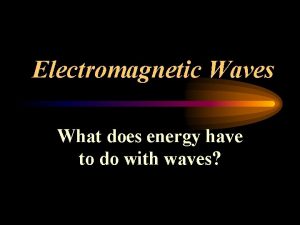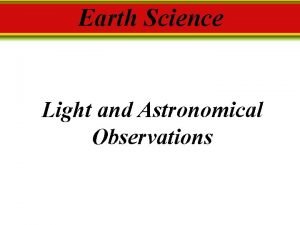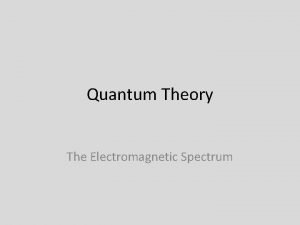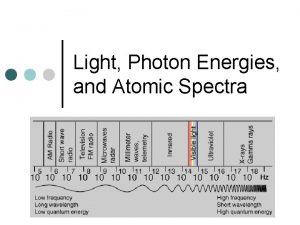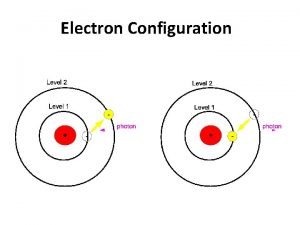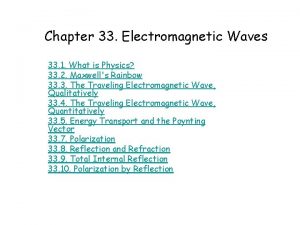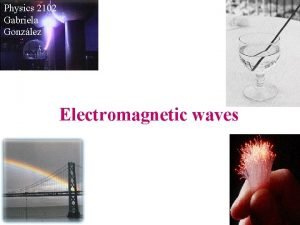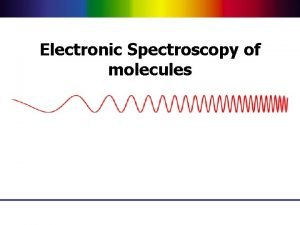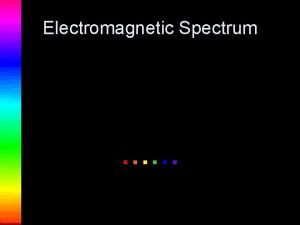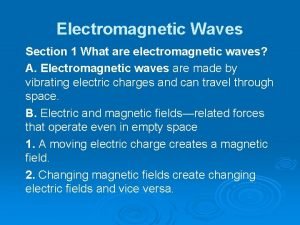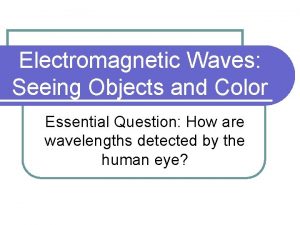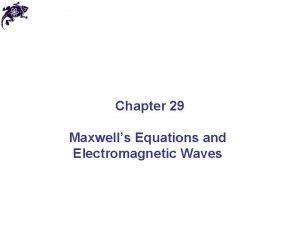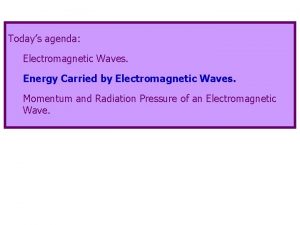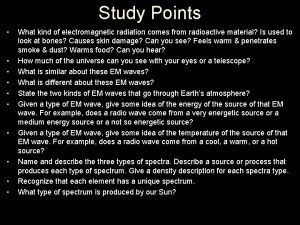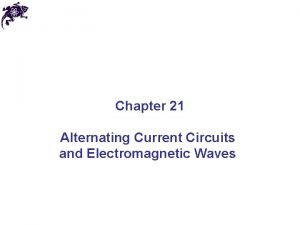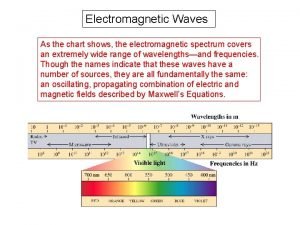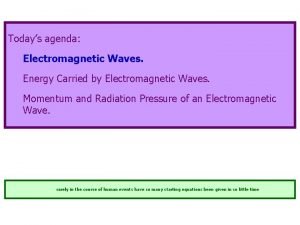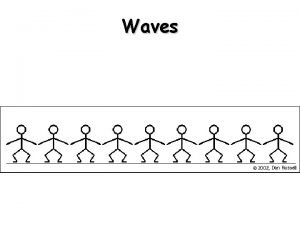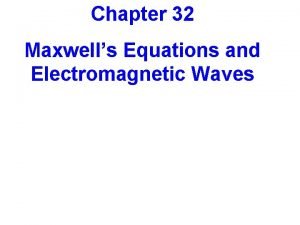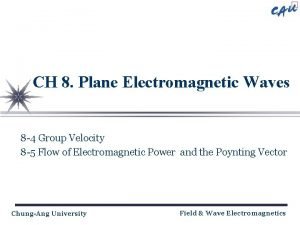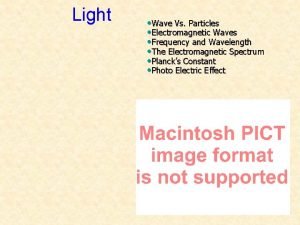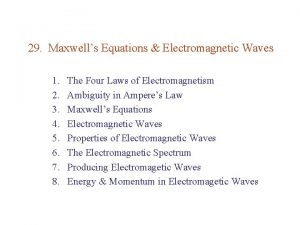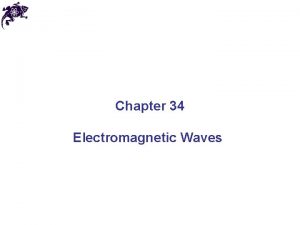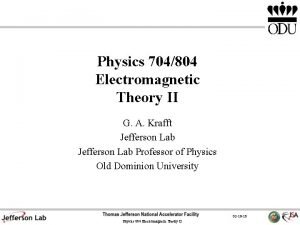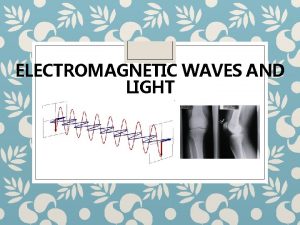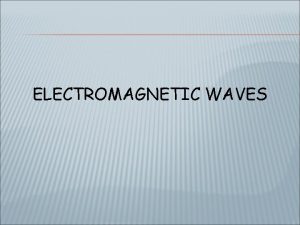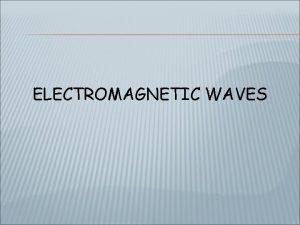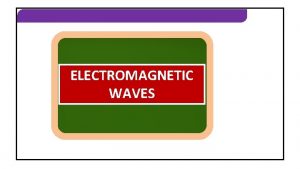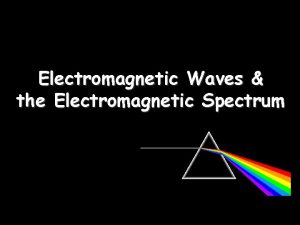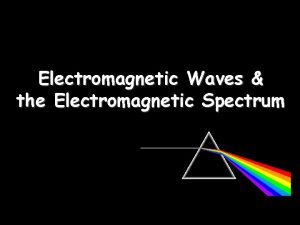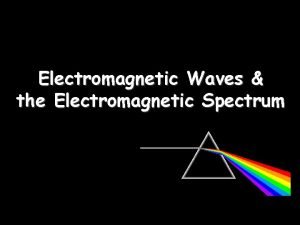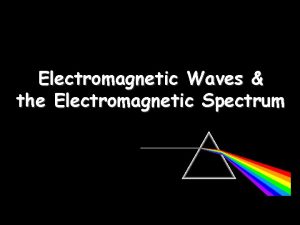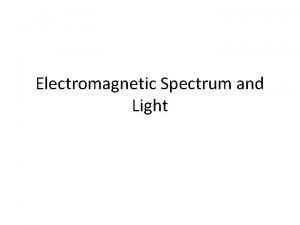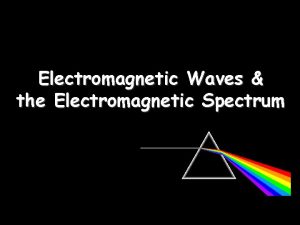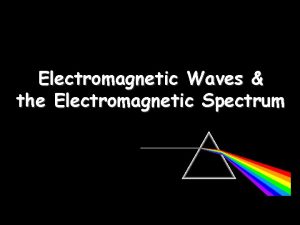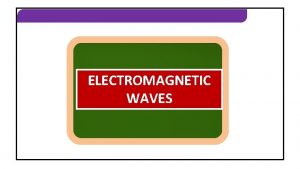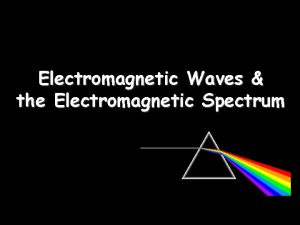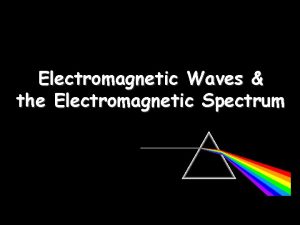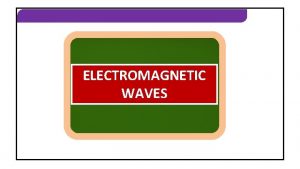Ch 7 Radiation of Electromagnetic Waves 7 1potentials















































- Slides: 47

Ch 7 Radiation of Electromagnetic Waves 7. 1、potentials of electromagnetic field, gauge invariance 7. 2、d’Alembert equation and retarded potential 7. 3、electric dipole radiation 7. 4、EM radiation from arbitrary motion charge

1. What is EM radiation EM field is excited by time-dependent charge and currents. It may propagate in form of waves. The problem is usually solved in terms of potentials. 特征:与1/r 正比的电磁场! 2.It is a boundary value problem Source (charge and current) excites EMF, EMF in turn affects source distribution --- boundary value problem! For convenience, our discussions are limited to a simple case – Distribution of source is known.

§ 7. 1 vector potential and scalar potentials are slightly different from the static cases 1. a)vector potential since ,we can introduce vector potential as the static field,

1. b)scalar potential Since ,scalar potential can not be defined as before Define scalar func

2).Gauge invariance Potentials are not uniquely determined, they differ by a gauge transformation. Gauge: Given a set of give identical electric and magnetic fields


3).Two typical gauges To reduce arbitrariness of potential, we give some constraint --- Gauge fixing。 Symmetry or explicit physical interpretation l Coulomb gauge condition transverse (横场), longitudinal (纵场)。 is determined by instantaneous distribution of charge density (similar to static coulomb field)

Function satisfies Prove l Lorenz gauge Ludwig Lorenz condition Function satisfies prove: satisfy manifest relativistic covariant equations

4). D’Alembert equation Prove:substitute , into Maxwell eqs And using

4. a) Under coulomb gauge So satisfies Poisson equation as in static case. instantaneous interaction? 4. b) Under Lorenz gauge

l wave properties 洛仑兹规范下的达朗贝尔方程是两个波动方程, 因此由它们求出的 及 均为波动 形式,反映了电磁场的波动性。 l highly symmetric and independent to each other Get one, get 2 nd for free. Solution of d’alembert eq under Lorenz gauge indicates that EM interaction takes time. To study radiation, we use Lorenz gauge.

§ 7. 2 Retarded potential 1. Solve d’Alembert equation Assume is known. We first solve point charge problem,then use superposition to get general solution

Assume point charge at origin, , symmetry indicates is independent of , so d’Alembert eq for scalar potential is * as let

The general solution for 1 D wave equation is Outward spherical wave Inward wave Compared with static potential , we have: If point charge is placed at 容易证明上述解的形式满足波动方程*式 For radiation

For contineous charge distribution Since satisfies identical equation as , so the solution:

2. Show the solution 、 satisfies Lorenz condition 证:令


3.Physical interpretation The value of the retarded potential at , depends on charge/current distribution at . Electromagnetic interaction takes time! physical excitation at reaches observation point by . And the speed of signal traveling in vacuum is c.

§ 7. 3 Electric dipole radiation 电磁波是从变化的电荷、电流系统辐射出来的。 Antenna with high frequency alternative electric current Non-uniform moving charged particles l we limit our discussion to charge distribution of periodic motion. Furthermore, size of charge distribution is much smaller than the distance between charge and the observation point.

1. General formula for radiation field Charge/current: 随时间正弦 或余弦变化 Substitute into retarded solution( ) let ,so Compared with static case, there is an additional phase factor

Similarly, Satisfy Lorenz condition Electromagnetic fields are ( )

2.Multiple expansion 1). Power expansion for small size of source Assume source to field point distance (size of charge/current distribution), so Perform power expansion around Where is unit vector along , (R is distance between center of coordinate and field point)

Keep first two terms, we have Since , so in denominator can be neglected. But it maybe important in phase, because is not necessary small, compared with

The radiation field for is if , The first term dominates Electric dipole radiation

2). 与 的关系 Under , ,we can further divide into three cases according to and a) (近区) , Time of propagation EM field is similar to the static case. b) (感应区) Very complicate. c) (远区,即辐射区) EM waves propagates away from the source. interested

3. Electric dipole radiation 1).Re-express in terms of dipole moment 2).Electric and magnetic fields here

Consider远区 so ( ) Magnetic induction , ,即 ,

using In spherical coordinates, Let along axis 电场线是经面上的闭合线

Discussion: (1)E oscillates alongitude and B along latitude lines. Direction of propagating, E and B are orthogonal to each other (right-hand). ( 2) E, B are proportional to , so they are propagating spherical waves. They are transverse ( TEM波) and maybe regarded as plane wave as . (3)without ( ), it can be shown that E is no longer perpendicular to k, electric lines are not close, but magnetic lines are still close (TM波).

4.Energy flux, angular distribution and power of radiation Average energy flux vector (平均能流密度矢量) 角分布 Average power 1)。与球半径无关,能量可以传播到无穷远。 2)。与电磁波的频率4次方成正比。




§ 7. 4 Magnetic dipole radiation and electric quadrupole radiation 电四极辐射 磁偶极辐射

§ 7. 5 Radiation from a localized charge in arbitrary motion (Bo-p 124) method 1:use the retarded potential 粒子看作小体积电荷分布,直接积分

method 2:using Lorentz transformation At rest frame At Lab frame where Lienard-Wiechert potential

Derivative was performed with respective to t,x. However



Radiation field from a relativistic charged particle Radiation field for arbitrary moving charge particle Radiation power 当v趋于光速,辐射集中于朝前方向,张角为

Bremsstrahlung and Synchrotron radiation Acceleration is parallel to velocity (轫致辐射) Angular distribution Radiation power where

Acceleration is perpendicular to velocity (同步辐射) Angular distribution Power where 辐射功率与粒子 能量平方正比!





 Example of a mechanical wave
Example of a mechanical wave Similarities of mechanical and electromagnetic waves
Similarities of mechanical and electromagnetic waves Transfer of energy when a wave disappears into a surface
Transfer of energy when a wave disappears into a surface Mechanical waves and electromagnetic waves
Mechanical waves and electromagnetic waves Difference between electromagnetic and mechanical waves
Difference between electromagnetic and mechanical waves Mechanical waves and electromagnetic waves similarities
Mechanical waves and electromagnetic waves similarities Sound waves are transverse waves true or false
Sound waves are transverse waves true or false Mechanical vs electromagnetic
Mechanical vs electromagnetic Facts about electromagnetic radiation
Facts about electromagnetic radiation Which telescope detects invisible electromagnetic radiation
Which telescope detects invisible electromagnetic radiation Conclusion of electromagnetic waves
Conclusion of electromagnetic waves When electromagnetic radiation of wavelength 300
When electromagnetic radiation of wavelength 300 Light wave chart
Light wave chart Types of radiation in the electromagnetic spectrum
Types of radiation in the electromagnetic spectrum Em wave spectrum
Em wave spectrum Intensity of em wave is
Intensity of em wave is Intensity of wave
Intensity of wave Electromagnetic waves vocabulary
Electromagnetic waves vocabulary Electromagnetic spectrum table
Electromagnetic spectrum table Electromagnetic waves
Electromagnetic waves Section 1 what are electromagnetic waves
Section 1 what are electromagnetic waves Electromagnetic waves: seeing objects and color
Electromagnetic waves: seeing objects and color Concept of electromagnetic waves
Concept of electromagnetic waves Electromagnetic spectrum equations
Electromagnetic spectrum equations Electromagnetic wave energy
Electromagnetic wave energy Doppler gamma
Doppler gamma Diffraction ocean waves
Diffraction ocean waves Alternating current circuits and electromagnetic waves
Alternating current circuits and electromagnetic waves Pie graph of electromagnetic waves
Pie graph of electromagnetic waves Energy carried by electromagnetic waves
Energy carried by electromagnetic waves Electromagnetic waves def
Electromagnetic waves def Electromagnetic waves characteristics
Electromagnetic waves characteristics Electromagnetic wave equation
Electromagnetic wave equation Electromagnetic waves powerpoint template
Electromagnetic waves powerpoint template Section 1 what are electromagnetic waves
Section 1 what are electromagnetic waves Electromagnetic wave power
Electromagnetic wave power Electromagnetic waves song lyrics
Electromagnetic waves song lyrics Electromagnetic waves frequency
Electromagnetic waves frequency Right hand rule for em waves
Right hand rule for em waves Hertz experiment electromagnetic waves
Hertz experiment electromagnetic waves Compare and contrast p waves and s waves using venn diagram
Compare and contrast p waves and s waves using venn diagram What is a semiconductor used for
What is a semiconductor used for Differences between constructive and destructive waves
Differences between constructive and destructive waves Seismic waves
Seismic waves Characteristics of a longitudinal wave
Characteristics of a longitudinal wave Seismic waves are mechanical waves
Seismic waves are mechanical waves Whats a reflected sound wave
Whats a reflected sound wave Electromagnetic theory
Electromagnetic theory








